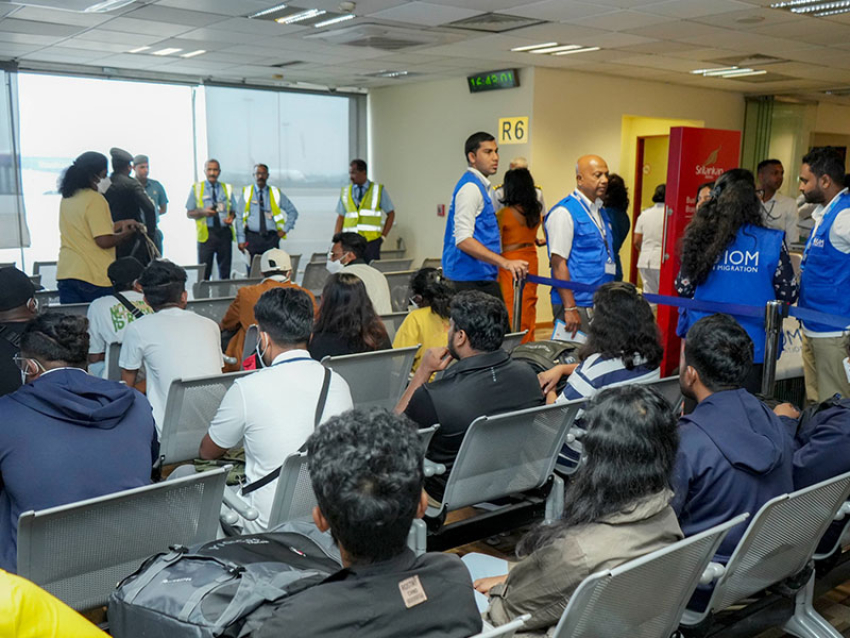The reef extends from Thennadi Bay, Vandalous Bay, which is the main bay, the Elephant Point Bay towards Kalkudah Bay and spreads 800 metres from the coast, Marine Environment Protection Authority’s General Manager/Chief Executive Officer Dr. P.B. Terney Pradeep Kumara told the Sunday Observer.Dr. Pradeep Kumara, who is also the University of Ruhuna’s immediate past Head of the Department of Oceanography and Marine Geology, said, “the main part of the reef is roughly 2.5 km in length along the coast at the southern end of the Vandalous Bay. The waters within the inner area of the reef is on an average 1-1.5 m. in depth while the outer ends of the reef may fall down to about 6-7 metres”.
Biodiversity
There have been 18 species of Butterfly fish, documented on the reef, which could be seen in crystal clear water.Some examples of the Butterfly fish are, the Chaetodon species and some of them Chaetodon collaris, Chaetodon cittrinellus, Chaetodon falcula, Chaetodon xanthocephalus,Chaetodon lineolatus, Chaetodon meyeri, Chaetodonmelanotus, Chaetodon rafflesi, and Chaetodon Triangulum.
These are very prominent and colourful butterfly fish. They live only within the backdrop of healthy corals, and are often referred to as Bio Indicators. The more that these species are present in these habitats, indicates the biodiversity of the habitat. The diversity of their colours attract the tourists. They feed on coral polyps and form their own territories.
Of the Algaes, there are, Caulerpa taxifolia,Ulva sargassam and the Padina species. There are also the sea grass species Halophila and Enhalus corrodes located between coral patches on thin muddy bottoms.They are the only flowering plants on the bottom of the seas, and the only living plants in the ocean. They have roots and rhizome leaves. They also adapt themselves to live in the submerged environments.
There are also the Barrel sponge species which are Xestospongia testudinaria and Sinularia, living in the deep areas up to a depth of 7-8 metres and go up to a depth of 30 metres.
In addition, a diver would see the diversity of the coral species, which would add to the regalia of the diversity. There are the Leather coral species Lobophytum and Staghorn corals Acropora Formosa, Table corals Acropora Hyacinthus, the Rose Coral
Montipora aequituberculata and another diverse array of coral species, Pocillopora damicornis, Pocillopora verrucosa, Pocillopora eydouxi, Porites rus, Favia favus Faviaspeciosa, Favites Favites abdita, Galaxia fascicularis, Goniastrea Leptoseris along with the Sabella sp. Feather duster worms, Panulirus sp Lobsters, Lambis lambis Common Spider Conch and Lambis truncate, the Giant Spider Conch. These are shelled animals and are molluscans.
Also visible to the discerning diver are the Drupa sp. Coral snail and the Conus spp. Cone shell. They add to the colour and the beauty.Also, visible are Echinothrix calamaris(Sea urchin), Diadema setosum(Black sea urchin)and the Culcita novaeguineae, (the Pin Cushion Sea star). They creep to the bottom and live on flat bottoms.
Conservation efforts
There is a joint all round effort by a large number of stakeholders involving the Kayankerni Marine sanctuary. Fully and acutely conscious of the past, they do not want Kayankerni to be another Hikkaduwa or Unawatuna!
The stakeholders in this conservation exercise are spearheaded by the Marine Environment Protection Authority(MEPA), Department of Wildlife Conservation and the District Secretary.
The mission is to make the project a Marine Sanctuary which will encourage tourists and the traditional fishers.
Also to some degree, the other stakeholders include, the International Union for the Conservation of Nature (IUCN), the United Nations Development Program, Central Environment Authority, Department of Fisheries, the National Aquaculture Development Authority, the Coast Conservation and Coastal Resources Management Department, the Coast Guard of Sri Lanka, the Sri Lanka Navy, and the District and Divisional Secretariats and other NGOs like Blue Resources Trust. They have formulated a Committee to look after the interests. The ultimate aim is to ensure the sustainability of the reef. Plans are underway to make the location as a case study for Sri Lanka. Bottom set nets and dynamiting will be banned.




















